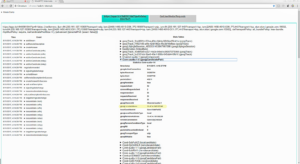It has been a few years since the WebRTC codec wars ended in a detente. H.264 has been around for more than 15 years so it is easy to gloss over the the many intricacies that make it work. Reknown hackathon star, live-coder, and |pipe| CTO Tim Panton was working on a drone project where he needed […]
video
How to capture & replay WebRTC video streams with video_replay (Stian Selnes)
Decoding video when there is packet loss is not an easy task. Recent Chrome versions have been plagued by video corruption issues related to a new video jitter buffer introduced in Chrome 58. These issues are hard to debug since they occur only when certain packets are lost. To combat these issues, webrtc.org has a […]
WebRTC beyond one-to-one communication (Gustavo Garcia Bernardo)
WebRTC and its peer-to-peer capabilities are great for one-to-one communications. However, when I discuss with customers use cases and services that go beyond one-to-one, namely one-to-many or many-to-many, the question arises: “OK, but what architecture shall I use for this?”. Some service providers want to reuse the multicast support they have in their networks (we […]
WebRTC Video Codec Debate: Is There No End in Sight? (Chris Wendt)
As detailed in previous posts on webrtcHacks, the Internet Engineering Task Force (IETF) has worked for the past few years to standardize the “on-the-wire” protocols that make up the WebRTC engine. It is coming up on 3 months since IETF 88 in Vancouver, where the IETF was to have settled the matter of a mandatory-to-implement […]
WebRTC mandatory video codec discussion: the final duel?
In the WebRTC standardisation post I mentioned that one of the controversial discussions in the IETF context was the mandatory to implement (MTI) video codec battle for WebRTC. While there are some technical arguments on the topic (i.e this VP8 vs H.264 – subjective evaluation and this performance comparisons discussion), there is no dispute both are high quality and […]





